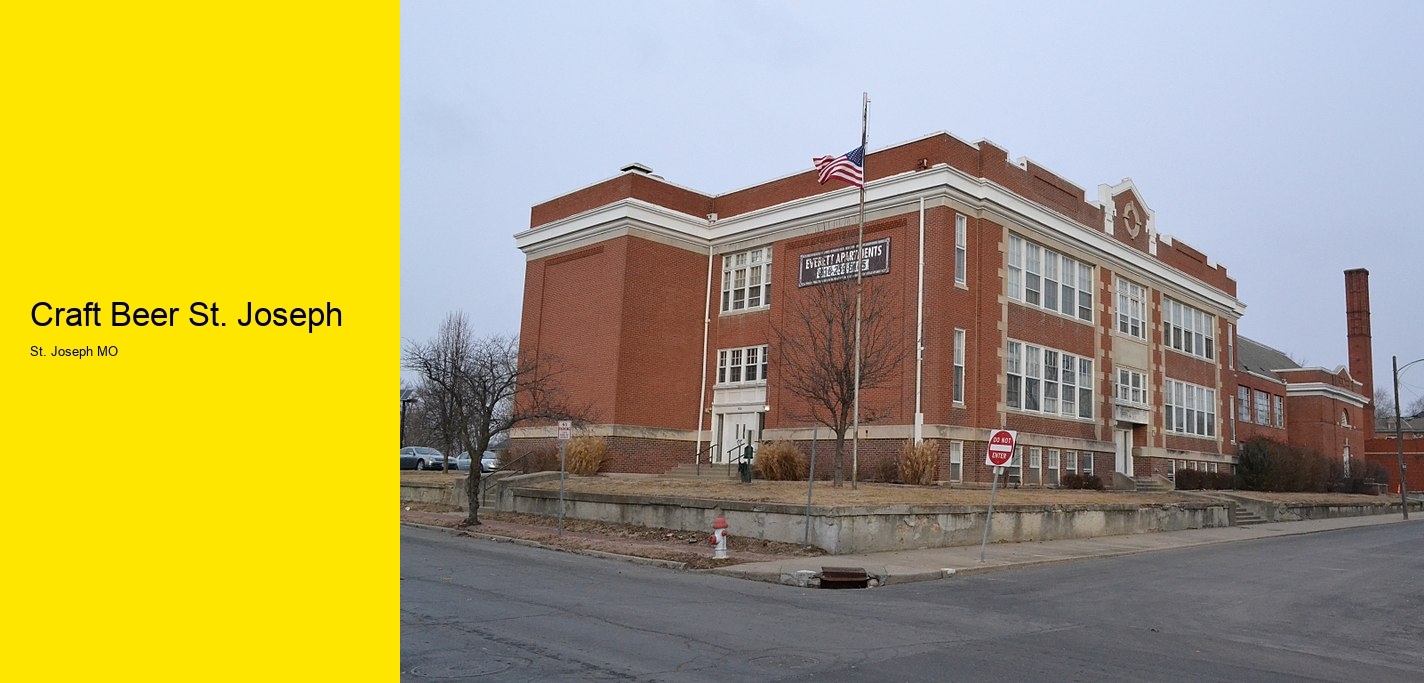Craft Beer St Joseph: The Local Brewery In St Joseph Offers A Diverse Selection Of Artisanal Brews For Enthusiasts To Enjoy
Exploring the Local Brewing Culture
The vibrant brewing landscape in St. Joseph offers a rich tapestry of flavors and experiences, yet newcomers often face challenges in navigating the various options. With numerous establishments crafting unique brews, it can be overwhelming to find the perfect spot that aligns with one's taste preferences. Additionally, the diversity of beer styles and seasonal offerings means that enthusiasts might miss out on hidden gems if they're not well-informed.
However, every concern melts away when stepping into the welcoming atmosphere of local breweries. They have truly mastered the art of creating an inviting environment that caters to both novices and seasoned connoisseurs alike. Here's how they address common hurdles:
- Variety of Choices: An extensive selection ensures everyone can find a brew that excites their palate.
- Knowledgeable Staff: Friendly and experienced team members provide recommendations tailored to individual tastes.
- Community Events: Regular happenings foster a sense of camaraderie, making it easy to connect with fellow beer lovers.
- Educational Opportunities: Tasting events and brewing workshops offer insights into the craft, enhancing appreciation.
As a former patron, I can confidently say that the local establishments have gone above and beyond to create a memorable experience. The passion for brewing shines through in every pint, and the sense of community is palpable. Those seeking to dive into the essence of local brewing will find themselves right at home, discovering new favorites in this enthusiastic craft beer haven.
Key Breweries Contributing to St. Joseph MO's Beer Culture
With a diverse array of establishments dedicated to brewing excellence, the local scene thrives on innovation and tradition. Each brewery infuses its unique character into the community, creating a rich tapestry of flavors and experiences. The local artisans are keenly aware of the hurdles that can arise in crafting exceptional brews.
One of the most prominent contributors is a brewery that specializes in seasonal ales. They embrace the local ingredients, showcasing the region's agricultural bounty. Their rotating taps often feature:
- Limited-edition brews that reflect the time of year.
- Collaborations with local farms for fresh produce.
- Community events that encourage tasting and exploration.
Another standout establishment has carved a niche with their barrel-aged offerings. Their commitment to quality is evident in every sip, as they meticulously select the finest oak barrels to enhance the complexity of their stouts and IPAs. Some insider tips include:
- Always ask about the aging process; it reveals much about the flavor profile.
- Try pairing their bold brews with locally crafted cheeses for an unforgettable experience.
- Keep an eye out for special release days; they often feature unique blends unavailable elsewhere.
A noteworthy trend in the area is the rise of hop-forward brews, which appeal to enthusiasts seeking bold bitterness and aromatic profiles. The local breweries are not just participants; they actively shape the conversation around craft beer, continually pushing boundaries and engaging the community in new and exciting ways.
Popular Craft Beer Styles in St. Joseph MO
Exploring the vibrant scene of locally brewed beverages reveals a diverse array of styles that tickle the palate. From hoppy IPAs to rich stouts, the options are endless. Each brew offers a unique taste journey, pushing the boundaries of flavor and creativity.
Porters and stouts, often characterized by their dark hues and robust profiles, are beloved for their comforting qualities.
Craft Beer St. Joseph - Sioux
- Kansas City International Airport
- Gunsmoke
IPAs, or India Pale Ales, are synonymous with boldness. The use of aromatic hops lends a vibrant bitterness that many enthusiasts crave. Expect a bouquet of citrus, pine, or tropical fruit aromas, depending on the specific hops utilized. When choosing an IPA, consider the balance between malt sweetness and hop bitterness; it's an art that local brewers have perfected.
- Wheat beers: Light and refreshing, perfect for warm days.
- Sours: Tangy and complex, these have gained popularity for their unique tartness.
- Seasonal brews: Often infused with spices or fruits, they reflect the essence of the season.
Understanding the local taste preferences, they focus on innovative brewing techniques that elevate each pint. Experimenting with local ingredients adds an authentic touch, celebrating the region's agricultural bounty.
For those looking to explore the offerings, consider attending local festivals or tap takeovers, where one can sample a variety of styles in one setting. Engaging with knowledgeable staff can enhance the experience, offering insights into the brewing process and flavor profiles.

Local Events and Craft Beer in St. Joseph MO
Participating in community gatherings can significantly boost the visibility of artisanal brews. Craft breweries often find that these events provide an avenue to showcase their unique concoctions, attracting enthusiasts and casual drinkers alike.
Craft Beer St. Joseph - Gunsmoke
- Sioux
Engaging directly with patrons allows breweries to gather invaluable feedback, refining their recipes based on real-time reactions. This interaction cultivates a loyal following, as locals feel a personal connection to the products. Not to mention, themed events often celebrate local ingredients, enhancing the freshness and appeal of the offerings.
- Encourage local artisans and musicians to participate, creating a vibrant atmosphere.
- Utilize social media to promote events, sharing behind-the-scenes glimpses of preparation.
- Offer limited-time brews that are only available during the event to entice attendance.
Breweries in St. Joseph MO grasp the significance of these local happenings. They actively participate, not merely as vendors but as community members sharing a passion. By hosting workshops or tasting sessions at these events, they invite potential customers to delve deeper into the craft brewing process, turning casual visitors into devoted patrons.
Understanding the nuances of flavor profiles and seasonal ingredients is crucial. Crafting seasonal brews that align with local festivities can attract attention and admiration. For instance, a pumpkin-spiced ale during fall festivals can resonate with attendees, leaving a lasting impression that translates into future sales.
The interplay between local events and craft brews cultivates a thriving community spirit, transforming St. Joseph into a hub for enthusiasts and new adventurers alike. Each gathering becomes a celebration of creativity, innovation, and camaraderie, where the love for finely crafted beverages shines brightly.
Discovering Breweries in St. Joseph MO
Venturing into the realm of local brews often reveals an array of delightful surprises. Enthusiasts may encounter a range of artisan creations that can be both exhilarating and overwhelming. Each establishment boasts its unique ambiance, flavors, and brewing techniques, making it essential to navigate wisely through the options available.
When delving into these local establishments, patrons frequently find themselves grappling with the sheer multitude of choices. From hoppy IPAs to rich stouts, the spectrum can be daunting. However, an exploration of these microbreweries is undeniably rewarding, with each sip offering a taste of local craftsmanship.
Each brewery in the area embraces its identity, often showcasing seasonal offerings that reflect the region's agricultural bounty. The understanding of local ingredients not only enhances flavors but also tells a story through each pint. Here are some insightful tips for an enjoyable experience:
- Engage with the brewers; their passion and expertise can guide you to hidden gems.
- Attend tastings or brewery tours to deepen your appreciation of the brewing process.
- Sample flights to explore a variety of styles without overwhelming your palate.
- Pair your drinks with local cuisine for a harmonious dining experience.
Each venue not only serves a drink but crafts an experience. Their dedication to quality and community shines through, making every visit a celebration of local culture and creativity. Whether you're a seasoned connoisseur or a curious newcomer, exploring the vibrant landscape of local breweries promises an unforgettable journey.
Homebrewing Community and Resources in St. Joseph, MO
The vibrant scene of brewing enthusiasts in St. Joseph thrives on creativity and experimentation, offering a plethora of opportunities for both novices and seasoned artisans. One often overlooked aspect is the wealth of local knowledge about fermentation techniques, unique flavor profiles, and the science behind brewing. Joining local clubs can be a game changer, as they provide access to a treasure trove of information and camaraderie.
Accessing quality ingredients is crucial for any homebrewer, yet it can sometimes feel like navigating a maze. The local purveyors in St. Joseph ensure that aspiring brewers have top-notch grains, hops, and yeast readily available. They often host workshops that delve into specialized topics such as:
- Advanced mashing techniques
- Flavor enhancement through adjuncts
- Water chemistry for optimal brewing
Moreover, the community's collective spirit means that knowledge-sharing is common. Engaging in local meetups or online forums can lead to discovering unique brewing methods that might not be well known outside the area. The enthusiasm displayed by fellow brewers often sparks innovative ideas and techniques.
Keeping abreast of seasonal ingredients is another insider tip. Utilizing local produce can elevate a brew, infusing it with distinctive local character. Seasonal fruit and herbs not only enhance the flavor but also create a sense of place in your final product. Collaborating with local farmers can be a rewarding venture as well.
Additionally, understanding the importance of sanitation cannot be overstated. Maintaining impeccable cleanliness ensures that your creations shine without the interference of unwanted bacteria. Investing in quality cleaning supplies and establishing a thorough routine will pay dividends in the long run.
Ultimately, the brewing landscape in St.
Craft Beer St. Joseph - Sioux
- Missouri Territory
The Future of Craft Brewing in St. Joseph MO
The evolution of small-scale brewing in St. Joseph is pulsating with energy and innovation. As consumer preferences shift towards artisanal products, the local scene is embracing unique flavor profiles and sustainable practices. This vibrant community of brewers is motivated to create experiences that connect with patrons on a deeper level.
One pressing aspect is the need for a robust supply chain that can adapt to the fluctuating demands of craft beer enthusiasts. The local brewers are adept at sourcing high-quality ingredients, ensuring that each batch reflects the essence of St. Joseph. They cultivate relationships with local farmers and suppliers, fostering a network that enhances freshness and diversity.
Flavor Trends and Innovative Techniques
Keeping an eye on emerging flavor trends is vital for staying relevant. Here are some exciting directions that the local artisans are exploring:
- Utilizing unconventional grains such as spelt and rye to add depth.
- Experimenting with wild fermentation methods for distinctive tastes.
- Incorporating local fruits and spices for seasonal brews.
Local brewers are committed to pushing boundaries, using innovative techniques like barrel aging and dry hopping to create complex flavor profiles. The fusion of traditional methods with modern technology allows them to produce exceptional brews that charm both casual drinkers and connoisseurs.
Engaging the Community
Community engagement is essential in this thriving landscape. Breweries often host events, from tastings to educational workshops, creating a space for enthusiasts to learn and connect. This fosters a sense of belonging and pride in the local brewing culture, encouraging collaboration among brewers.
As the craft brewing scene continues to flourish in St. Joseph, the combination of creativity, quality, and community involvement sets the stage for a bright and dynamic future. The ongoing commitment to excellence ensures that each pint served is not just a drink, but a story waiting to be told.
I couldn't be more pleased with my experience at Craft Beer St. Joseph. The knowledgeable staff provided exceptional guidance and recommendations that truly enhanced my appreciation for craft beer. If you're looking to explore the world of craft beer, I highly recommend reaching out to Craft Beer St. Joseph for a free consultation. Their expertise and passion will help you discover new favorites and elevate your craft beer journey. Don't hesitate to contact them today!




















